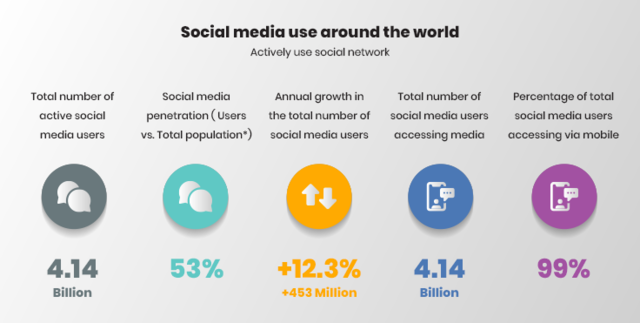
Table of Contents
What does that mean?
In elementary words, Social Commerce means selling via Social Networking Platforms. To boost up your e-Commerce game, Social Commerce is an impactful platform nowadays.

The entire customer cycle is rolled on the social platform from product search to final purchase. Social media platforms like Facebook, Instagram, Pinterest, and Snapchat make this commerce a drift with their marketplace. Of course, don’t complicate this with e-Commerce. E-Commerce means selling products via websites or dedicated applications. On the flip side, Social Commerce trades within the social media platform.
Amid the COVID-19, the Social market is projected to reach a size of US$604.5 Billion by 2027 over the analysis period 2020-2027. Yes, that’s such loud numbers!! If you would like to make the most out of your eCommerce game, you must understand the art of Social Commerce.
Types of Social Commerce
Social Commerce can happen in ample ways. However, your customers can aid you in what works best in a wholly unique way. Most importantly, it encourages to expand your reach and pool of new audiences. Mainly, It can be done via Chatbot features, Payments via social platforms, Community Forums, Stories, post, and Ad campaigns.
Chatbots
Have you ever noticed while looking at any Facebook page!! That Chat option is popping up! Or the symbol of WhatsApp or Messenger. Yes, Chatbots directly lead you to Call-To-Action forunhesitating communication with Customers. People can see your page, ask questions and get a spontaneous response. Even you can utilise third-party tools to ease the buying behaviour.

E-Payment on Social Platforms
For instance, Apple Pay and Facebook Pay sets the example for this. It navigates your customers to buy the products directly via social payments. Moreover, it allows customers to purchase things on the same platform without going to the actual site. Scroll, Click, Make a Payment, buy that thing and see your wall updates!!
Community or Forum
Ever wonder while navigating those posts or stories on social media! How a sudden click leads you to Buy the product! Yes, this is how this type of Social commerce works. Build up a community or groups on platforms like LinkedIn, where landing pages or highlight the benefits of products are shared. Facebook sets the best example for such commerce by creating a group where people can Buy or Sell the products on the same platform.
Stories and Social Selling
Stories on Facebook and Instagram with Hashtags will lead you to the Product Page. Reviews or Videos that are showcasing Customer feedback aids you more on Buying behaviour. However, due to time constrain, You have to share frequently.

Let’s focus on the benefits your Business gets utilising Social Commerce
Frictionless Purchase Cycle
With “Buy Now” buttons on social posts, One can buy directly on the social platforms. See the product, you like it and purchase it spontaneously and continue to see your Friend’s posts’ updates.
Faster Conversation
With Chatbots, the audience can easily communicate with merchants without any threshold and make a quick purchase.
Reach Global Audiences
Ample of people use social media nowadays. Based on data research, 4.41 billion people use social media globally, more than half of the planate. There is no boundary to promote your business, and hit the target audiences.

Improved SEO
Social commerce helps to increase traffic. Besides that, sharing updates, new products, and any pieces of information linked to your digital store drives the traffic through your followers on Social Media.
Personal Touch
Understanding the social signs, for example, Likes, Dislikes, Hashtags, Mentions, and reviews, can provide a personal touch on the customers’ feeds. Because your existing customers are likely to follow your brand on Social media. Those happy and satisfied customers indeed repeat the purchase.
Get Recommendations
Happy customers always spread good word of mouth on social media. This helps you to earn more trust and popularity at zero cost. New customers always look for reviews before buying the products. However, Bad reviews can defame the brand as well. Make sure to learn the art of How to handle those Unhappy customers with bad reviews.
Marketing Strategies using social success
Create a custom shopping experience
Customizing your content, graphics, color pallet, and fonts on the Social media store to provide a consistent shopping experience for your store.
Market Lower cost products
People are using social media for entertainment and not to buy those sparkling diamonds like high-end products. However, they come across any cheap deal while scrolling down; they are more likely to purchase it.
Use micro-influencers
To boost the market reach, trust, and credibility, partnering with micro-influencers brings significant rewards. For example, you don’t need to have a higher reach; sometimes with niche followers, you have a stronger brand affiliation.
Utilise Chatbot Feature
Chatbots are the best alternative as they are available all days of the year. It helps the consumers filter the products based on their needs and make the purchase decision. Even with the limited command over social channels, it helps to convert the leads by providing a personalised buying experience.
Build your Targets
Make sure visitors provide you all the information when they come across for conversation. Even if they don’t buy anything, you can get their emails for future marketing scopes.
Summary
Social Media is evolving with some exceptional features at an explosive rate. Social Commerce allows brands to create a smooth and spontaneous shopping experience. Therefore, marketers should have the fittest knowledge to utilise those channels to target the right audiences.
In conclusion, Social Commerce allows to build trust, increase AOV, loyalty, and brand awareness with lesser time and money invested in the right direction. Start understanding your Social presence and make the most of these social media platforms for a successful eCommerce experience.

